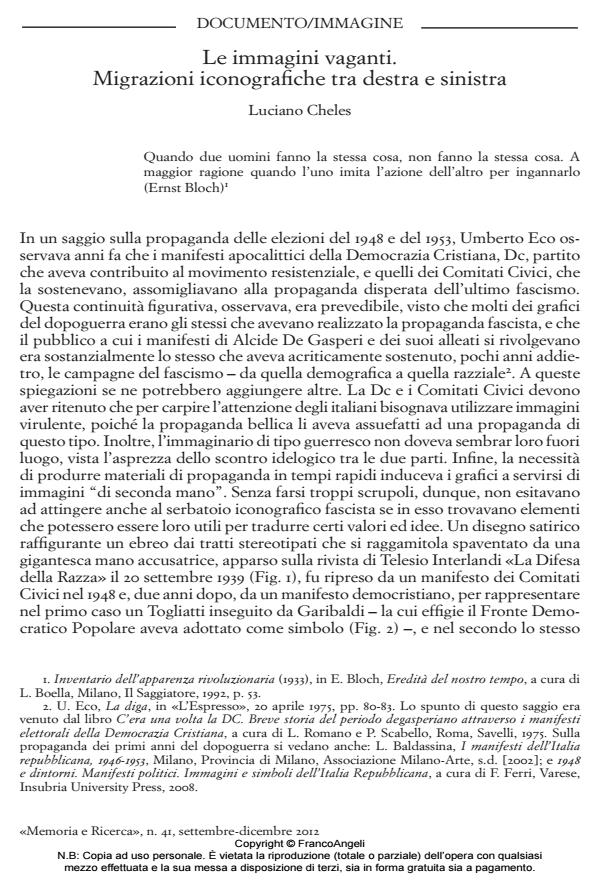Le immagini vaganti. Migrazioni iconografiche tra destra e sinistra
Titolo Rivista MEMORIA E RICERCA
Autori/Curatori Luciano Cheles
Anno di pubblicazione 2013 Fascicolo 2012/41
Lingua Italiano Numero pagine 26 P. 121-146 Dimensione file 6407 KB
DOI 10.3280/MER2012-041008
Il DOI è il codice a barre della proprietà intellettuale: per saperne di più
clicca qui
Qui sotto puoi vedere in anteprima la prima pagina di questo articolo.
Se questo articolo ti interessa, lo puoi acquistare (e scaricare in formato pdf) seguendo le facili indicazioni per acquistare il download credit. Acquista Download Credits per scaricare questo Articolo in formato PDF

FrancoAngeli è membro della Publishers International Linking Association, Inc (PILA)associazione indipendente e non profit per facilitare (attraverso i servizi tecnologici implementati da CrossRef.org) l’accesso degli studiosi ai contenuti digitali nelle pubblicazioni professionali e scientifiche
Parties frequently appropriate propaganda images from other movements, which all too often belong to the opposite end of the political spectrum. This article considers the main forms of visual appropriation and illustrates them with examples drawn from Italian and French post-war propaganda. It argues that the phenomenon is widespread especially among right-wing parties, which tend to adopt the imagery created by well-established political organisations to legitimate themselves, to present themselves to the voters in a more modern and appealing way or to attempt a dialogue with them. The technique of imitation may also be used to create a sense of confusion with the ultimate aim of neutralising the messages of other parties, or to steal votes from their natural constituencies. Left-wing parties too at times mimic the images (and slogans) of the right, but usually with parodying intentions which can escape the public at large.
Parole chiave:Propaganda. Posters. Mimicry. Movimento Sociale Italiano. Alleanza Nazionale. Forza Italia. Partito Democratico della Sinistra
- Iconic images in propaganda Luciano Cheles, in Modern Italy /2016 pp.453
DOI: 10.1017/mit.2016.55
Luciano Cheles, Le immagini vaganti. Migrazioni iconografiche tra destra e sinistra in "MEMORIA E RICERCA " 41/2012, pp 121-146, DOI: 10.3280/MER2012-041008